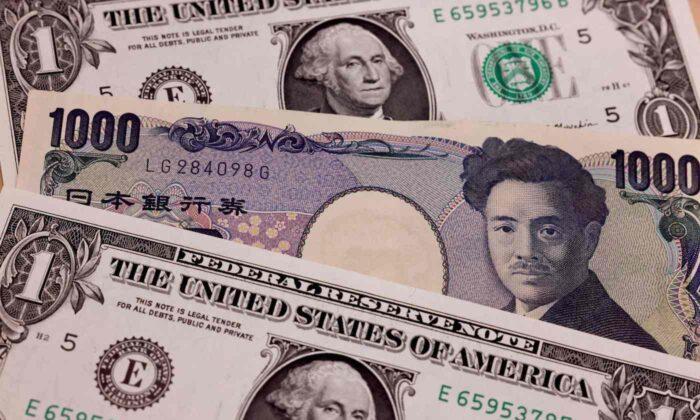The Japanese yen fell to as low as 132.60 yen per dollar on Tuesday, its lowest level since April 2002, as market participants anticipated a further widening interest rate gap between the United States and Japan.
The dollar was buoyed by the 10-year Treasury yield’s rise to 3.05 percent for the first time in nearly four weeks. The currency pair was last trading at 132.12, up 0.17 percent.
The U.S. Federal Reserve raised its key interest rate by a half percentage point last month as part of monetary policy tightening. But the Bank of Japan (BOJ) maintained that monetary tightening remains off the table for the Japanese economy.
Kuroda explained that Japan’s economy is still recovering from the downturn brought on by the COVID-19 pandemic and has been under downward pressure from the income side due to rising commodity prices.
“In this situation, monetary tightening is not at all a suitable measure. The top priority for the Bank is to persistently continue with the current aggressive monetary easing centered on yield curve control and thereby firmly support economic activity,” he said.
“Unlike other central banks, the Bank has not faced the trade-off between economic stability and price stability. For this reason, it is certainly possible for the Bank to continue stimulating aggregate demand from the financial side.”
The dollar also edged higher versus the euro, sterling, and Swiss franc. It also rose against the Australian dollar, with the market divided on whether the country’s central bank will hike Australia’s benchmark interest rate by a quarter-point or opt for something bigger.
The Commonwealth Bank of Australia (CBA) attributes the yen’s weakness to yield differentials and Japan’s reliance on energy imports, although it does not anticipate further depreciation.
“We consider JPY will continue to benefit from safe-haven flows so long as Japan’s current account remains in surplus,” CBA strategist Carol Kong wrote in a note to clients.
“As such, we do not anticipate a repeat of the rapid USD/JPY appreciation seen in March and April,” and instead expect the dollar to consolidate near the top of its recent 126-131 yen range, she said.
Strong U.S. job data at the end of last week fueled speculations that upward price pressures will persist, potentially resulting in the Federal Reserve implementing more aggressive action.





